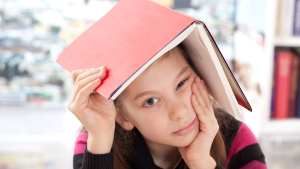Welcome to our blog post that explores the impact of school design on students’ learning experience. As educators, we know that a positive and supportive environment is critical for student growth and development. But did you know that the physical space in which they learn plays a significant role in creating such an environment?
From classroom layout to color schemes, every aspect of school design can influence how engaged, motivated, and productive students are. In this article, we’ll delve deeper into the research on school architecture and its effects on learners. So read on to discover how you can use design principles to create a more conducive atmosphere for your students!
The Impact of School Design on Student Learning
The quality of a school’s physical environment is important for student learning and achievement. In fact, research has shown that the design of a school can have a significant impact on students’ academic performance and overall well-being.
For instance, studies have found that classrooms with more natural light tend to promote better student outcomes. In one study, students in classrooms with the most natural light had significantly higher test scores than those in classrooms with the least amount of natural light. Similarly, another study found that students in schools with good acoustics (i.e., low levels of background noise) had better reading comprehension than those in schools with poor acoustics.
Other research has shown that certain design features can help reduce stress and promote healthy behaviors among students. For instance, a study discovered that schools featuring green spaces, including parks featuring lush green grass — perhaps grown with top-quality grass seed — and tall trees, tend to have lower rates of absenteeism and violence. This suggests a correlation between the presence of vibrant natural environments within educational settings and improved student attendance and behavior.
Another study observed that students attending schools with access to outdoor areas, such as well-maintained playgrounds (possibly achieved with professional fungicide solutions), tend to engage in higher levels of physical activity and exhibit improved mental health.
Thus, it is clear that the design of a school can have a significant impact on students’ learning and well-being. When designing or renovating schools, it is important to consider how different features can affect students’ experiences. By creating positive learning environments, we can set students up for success both inside and outside the classroom.
Types of School Design
There are three main types of school design: traditional, modular, and contemporary. Traditional school design is characterized by classrooms arranged in a linear fashion, with each room having its own door to the outside. Modular school design is characterized by classrooms that are connected to each other, typically without doors to the outside. Contemporary school design is characterized by an open floor plan, with classrooms arranged around a central common area.
Each type of school design has its own advantages and disadvantages. Traditional school design is often seen as more formal and traditional, which can be beneficial for some students. However, it can also be seen as less flexible and less adaptable to changing needs. Modular school design is often seen as more flexible and adaptable, as it allows for easier rearrangement of classrooms.
However, it can also be seen as less private and more chaotic. Contemporary school design is often seen as the most modern and innovative, providing a bright and airy space for learning. However, it can also be seen as too open and lacking in privacy.
Benefits of School Design for Students
School design can have a positive impact on students in many ways. Good school design can improve students’ academic performance, increase their engagement in school, and reduce behavioral problems.
Academic Performance:
Studies have shown that students perform better academically in well-designed schools. One study found that students in well-designed schools had higher test scores and grades, and were more likely to graduate from high school. Another study found that students in well-designed schools were more likely to go on to college.
Engagement:
Students who are engaged in their school are more likely to succeed academically and stay in school. Good school design can increase student engagement by providing spaces that are stimulating and encourage collaboration.
Behavioral Problems:
Behavioral problems are often linked to poor school design. For example, noise and crowding can lead to disruptive behavior. Poorly lit and ventilated classrooms can also cause behavioral problems. Good school design can help reduce behavioral problems by providing an environment that is comfortable and conducive to learning.
Strategies to Create Positive Learning Environments
In order to create positive learning environments, educators must be intentional about their school design. There are several strategies that can be used to create positive learning environments, which include:
- Creating physical spaces that are conducive to learning. This means designing classrooms and common areas that are comfortable and visually appealing. It also means making sure that the school is well-lit and free of clutter.
- Establishing clear rules and expectations. Students need to know what is expected of them in order to feel safe and secure in their learning environment. When rules are clear and expectations are high, students are more likely to meet them.
- Promoting social-emotional development. Positive learning environments nurture students’ social-emotional development by providing opportunities for collaboration and relationship building. When students feel supported emotionally, they are better able to engage in academic tasks.
- Encouraging active engagement. Learning should be an active process, and classrooms should be designed accordingly. This means incorporating hands-on activities and encouraging student dialogue throughout the lesson.
The Role of Technology in Positive Learning Environments
Though technology has become increasingly prevalent in society, its role in education is still being debated. Some believe that technology can be a powerful tool to enhance learning, while others believe that it can be distracting and even harmful.
There is no denying that technology has the potential to revolutionize education. With the right tools and applications, students can have access to information and resources that were previously out of reach. Technology can also help students learn in new and innovative ways, customizing their education to fit their needs and interests. For instance, schools making use of a School Management Software with Integrated Teacher Gradebooks can streamline administrative tasks and improve communication between teachers, students, and parents. Similarly, technology like smart boards can enhance classroom interaction by providing dynamic visual aids and interactive learning experiences.
However, technology can also be a major distraction. If not used properly, it can pull students away from their studies and impede their ability to focus. In addition, some worry that too much reliance on technology will lead to a decline in critical thinking skills and face-to-face interactions.
The key is to strike a balance between using technology as a tool and using it as a crutch. When used correctly, technology can play a vital role in creating positive learning environments for students.
Challenges Associated with Creating Positive Learning Environments
The challenges associated with creating positive learning environments are many and varied. One of the most significant challenges is ensuring that the school design supports the educational goals and objectives of the school. Another challenge is to create a learning environment that is both physically and emotionally safe for students.
Additionally, it is important to create an environment that promotes student engagement and motivation. Finally, schools must be designed to meet the needs of all students, including those with special needs or who are at-risk.
Creating a positive learning environment is essential for student success. By understanding the impact of school design on students, educators can make conscious decisions to promote an atmosphere that encourages optimal performance and engagement.
From classroom setup to lighting and seating arrangements, taking these factors into consideration can help foster an environment where students feel comfortable and safe while they learn. With the right set up, teachers can create an inspiring space that helps their students reach their full potential.




